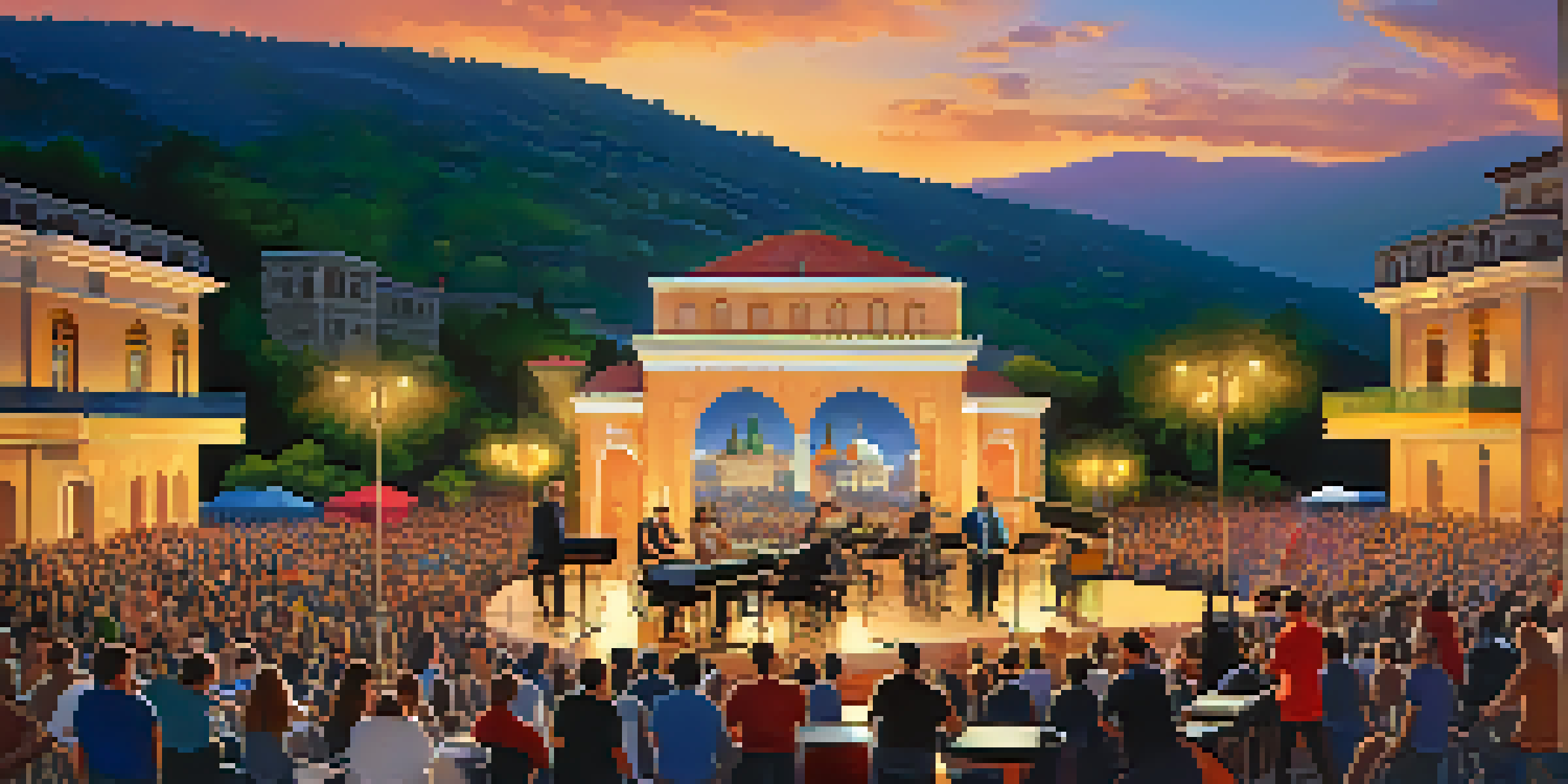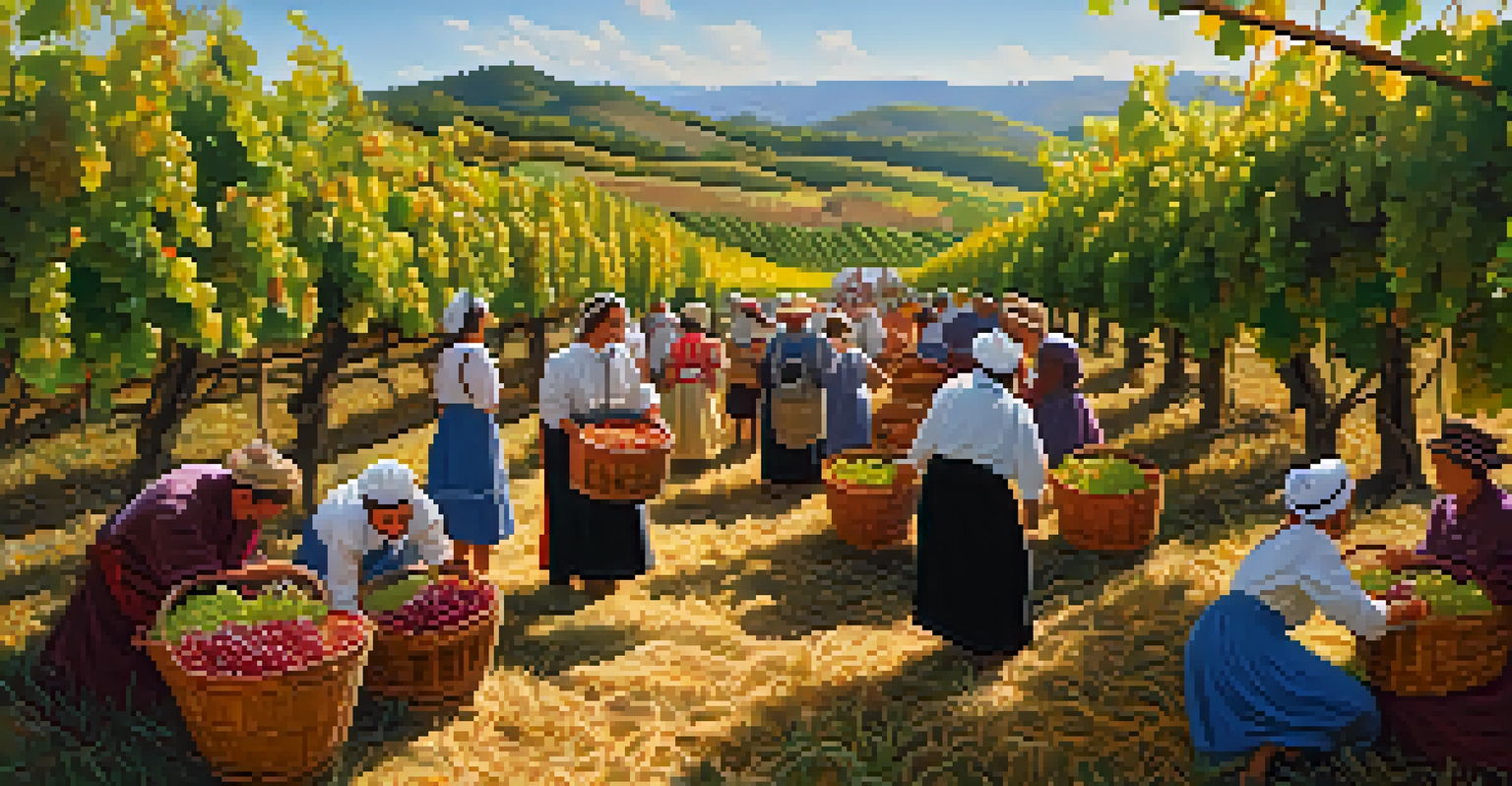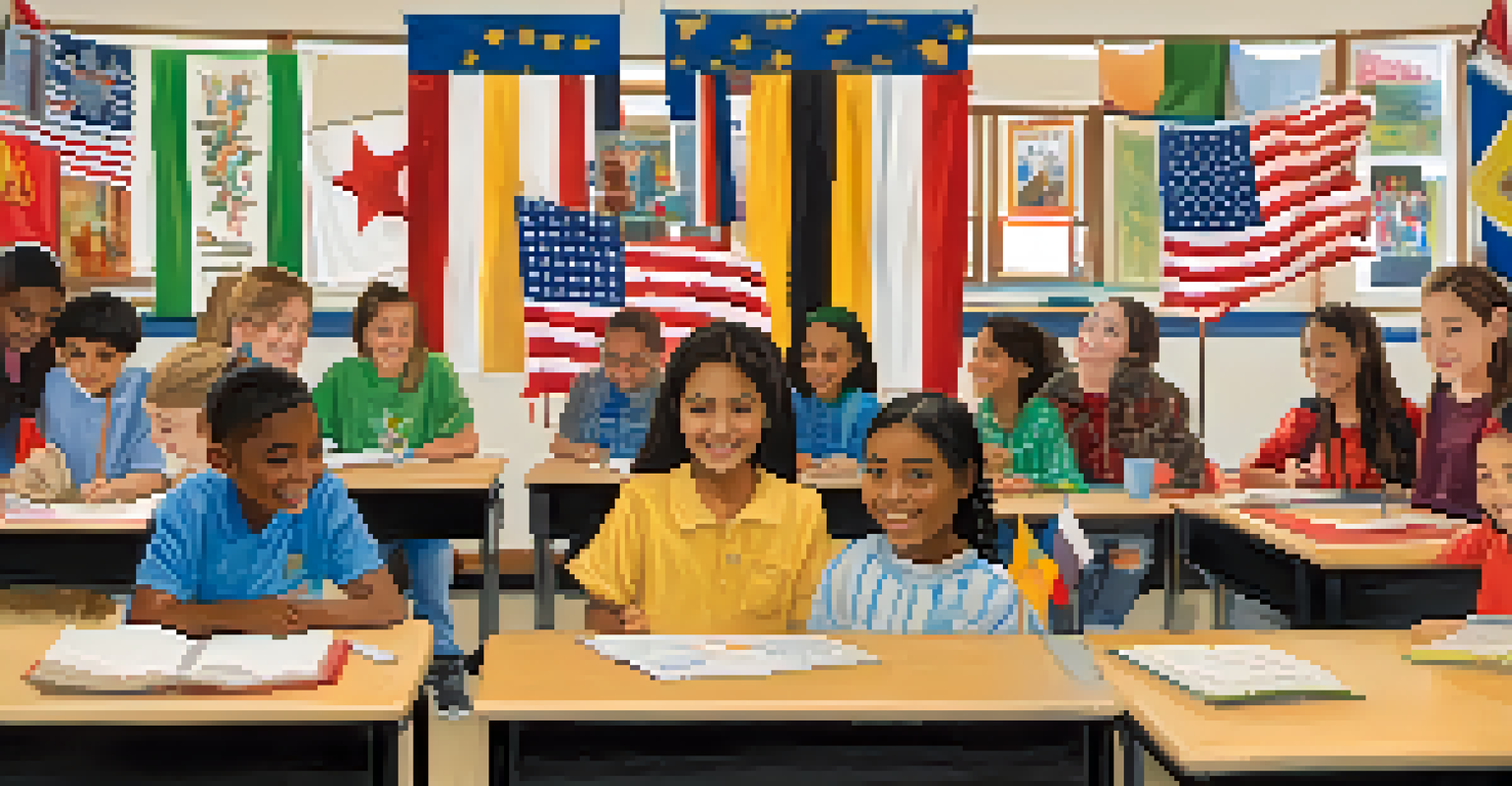Historical Overview of Cultural Diversity in Georgia Through Time

The Ancient Roots of Georgia's Cultural Landscape
Georgia's cultural diversity can be traced back to ancient times when various tribes and civilizations inhabited the region. The Colchians and Iberians, two significant tribes, contributed to the early cultural fabric of Georgia, bringing unique customs and traditions. Their interactions with neighboring cultures, such as the Greeks and Persians, laid the groundwork for a rich tapestry of influences that would shape the region's identity.
Cultural diversity is not a reason for division, but a source of strength and unity.
As trade routes flourished, particularly during the Silk Road era, Georgia became a melting pot of different cultures. Merchants and travelers from diverse backgrounds introduced new ideas, languages, and art forms. This exchange not only enriched Georgian culture but also established it as a vital crossroads between Europe and Asia, fostering a sense of openness and curiosity among its people.
These ancient interactions set the stage for centuries of cultural evolution in Georgia, showcasing the importance of diversity from its earliest days. The blend of indigenous traditions and foreign influences laid a foundation that would continue to evolve, making Georgia a unique cultural hub.
The Middle Ages: A Cultural Flourishing
During the Middle Ages, Georgia experienced a cultural renaissance characterized by the flourishing of the arts, literature, and religion. The establishment of the Kingdom of Georgia in the 11th century brought a sense of unity and pride, which in turn encouraged the development of a distinct Georgian identity. This period saw the construction of magnificent churches and cathedrals, often adorned with intricate frescoes that reflected a blend of local and Byzantine artistic traditions.

Additionally, the era fostered a rich literary culture, with poets and writers like Shota Rustaveli gaining prominence. His epic poem 'The Knight in the Panther's Skin' not only highlights the values and virtues of Georgian culture but also showcases the influence of Persian and Arab literary styles. This blending of ideas reveals how diverse cultural influences can coexist and inspire creativity.
Ancient Diversity Shaped Georgia
Georgia's cultural landscape has deep roots in ancient interactions among diverse tribes and neighboring civilizations.
The Middle Ages in Georgia illustrate how cultural diversity can thrive in a harmonious environment, where different traditions and beliefs contribute to a vibrant cultural landscape. This period set the tone for Georgia's ongoing appreciation of its multifaceted identity.
The Impact of Russian Rule on Cultural Dynamics
The 19th century marked a significant turning point in Georgia's cultural landscape with the onset of Russian imperial rule. While this period brought about modernization and infrastructure development, it also imposed restrictions on Georgia's cultural expressions. The tension between Russian authority and Georgian identity led to a resurgence of national pride and cultural revival, as Georgians sought to preserve their heritage.
The beauty of the world lies in the diversity of its people.
Intellectuals and artists began to explore and celebrate their roots, incorporating traditional Georgian themes into their works. This movement, known as the Georgian National Revival, emphasized the importance of language, folklore, and music, reflecting a desire to reclaim their cultural identity amidst foreign domination. The efforts of figures like Ilia Chavchavadze and Akaki Tsereteli played a crucial role in fostering a sense of unity and cultural awareness.
Despite the challenges posed by Russian rule, this era ultimately reinforced the resilience of Georgian culture. The struggle for cultural preservation highlighted the significance of diversity as a source of strength, setting the stage for future movements advocating for independence and self-expression.
Post-Soviet Era: A New Chapter in Cultural Diversity
The dissolution of the Soviet Union in the early 1990s opened a new chapter for Georgia, allowing for a more profound exploration of its cultural diversity. With newfound freedom, various ethnic groups and communities within Georgia began to express their unique identities openly. This period marked a resurgence of traditional practices, languages, and festivals, as people sought to reconnect with their heritage.
Cultural festivals celebrating the diverse ethnic groups in Georgia, such as the Abkhaz, Ossetians, and Mingrelians, gained prominence. These events provided a platform for showcasing traditional music, dance, and crafts, fostering a spirit of inclusivity and mutual respect. The celebration of diversity during this time reinforced the idea that each group contributes to the broader Georgian identity.
Cultural Revival Amidst Challenges
The Russian rule in the 19th century sparked a national revival that emphasized the importance of preserving Georgian cultural identity.
In this post-Soviet landscape, Georgia's cultural diversity has emerged as a vital aspect of its national identity. The embrace of different traditions and the acknowledgment of various communities have enriched the cultural narrative, allowing for a more comprehensive understanding of what it means to be Georgian.
Cultural Exchange and Globalization in Modern Georgia
In the age of globalization, Georgia has become increasingly interconnected with the world, leading to new cultural exchanges. The influx of foreign influences has introduced contemporary ideas and practices, blending seamlessly with traditional Georgian culture. This modern dynamic has given rise to a vibrant arts scene, where local artists incorporate global trends while staying true to their roots.
Contemporary Georgian cuisine, for instance, showcases a fusion of traditional recipes with international flavors, reflecting the diverse backgrounds of those who call Georgia home. This evolution illustrates how cultural diversity can adapt and thrive in a global context, enriching the culinary heritage of the country. Additionally, music and dance have seen a similar transformation, with artists blending traditional folk elements with modern genres.
The ongoing cultural exchange in Georgia serves as a testament to its resilience and adaptability. Embracing diversity not only enhances the cultural landscape but also fosters a sense of community and shared identity among its people, bridging the gap between the past and the present.
The Role of Education in Promoting Cultural Understanding
Education plays a crucial role in fostering cultural understanding and appreciation among Georgia's diverse population. Schools and universities have begun incorporating multicultural curricula that highlight the histories and contributions of various ethnic groups. This initiative encourages students to engage with different cultures, fostering a sense of respect and empathy from a young age.
Moreover, cultural exchange programs and workshops have become increasingly popular, allowing students to learn directly from representatives of various communities. These experiences create opportunities for dialogue and collaboration, breaking down stereotypes and misconceptions. By promoting cultural awareness through education, Georgia is nurturing a more harmonious society that values diversity.
Modern Georgia Celebrates Diversity
In the post-Soviet era, Georgia has embraced its cultural diversity through festivals and education, fostering a sense of unity among various ethnic groups.
The emphasis on education as a tool for cultural understanding reflects a commitment to inclusivity in Georgia. As the younger generation becomes more aware of their country's rich cultural tapestry, they are better equipped to appreciate and celebrate the diversity that defines their identity.
Celebrating Cultural Diversity: Festivals and Traditions
Georgia's rich cultural diversity is beautifully encapsulated in its vibrant festivals and traditions. Events like the Tbilisi Jazz Festival and the Ethno Jazz Festival celebrate the fusion of different musical styles, attracting both local and international artists. These celebrations highlight the importance of cultural exchange and showcase how diverse influences can create something uniquely Georgian.
Traditional festivals, such as the Grape Harvest Festival and the Alaverdoba, also reflect the multicultural essence of Georgia. These events not only celebrate local customs but also invite participation from various ethnic groups, creating a sense of unity in diversity. Such gatherings foster community spirit and allow individuals to share their heritage with others, reinforcing the idea that cultural diversity enriches the social fabric.

Through these festivals and traditions, Georgia continues to honor its diverse cultural landscape. Celebrating this diversity not only strengthens community bonds but also promotes a greater understanding and appreciation of the rich tapestry that defines the nation.